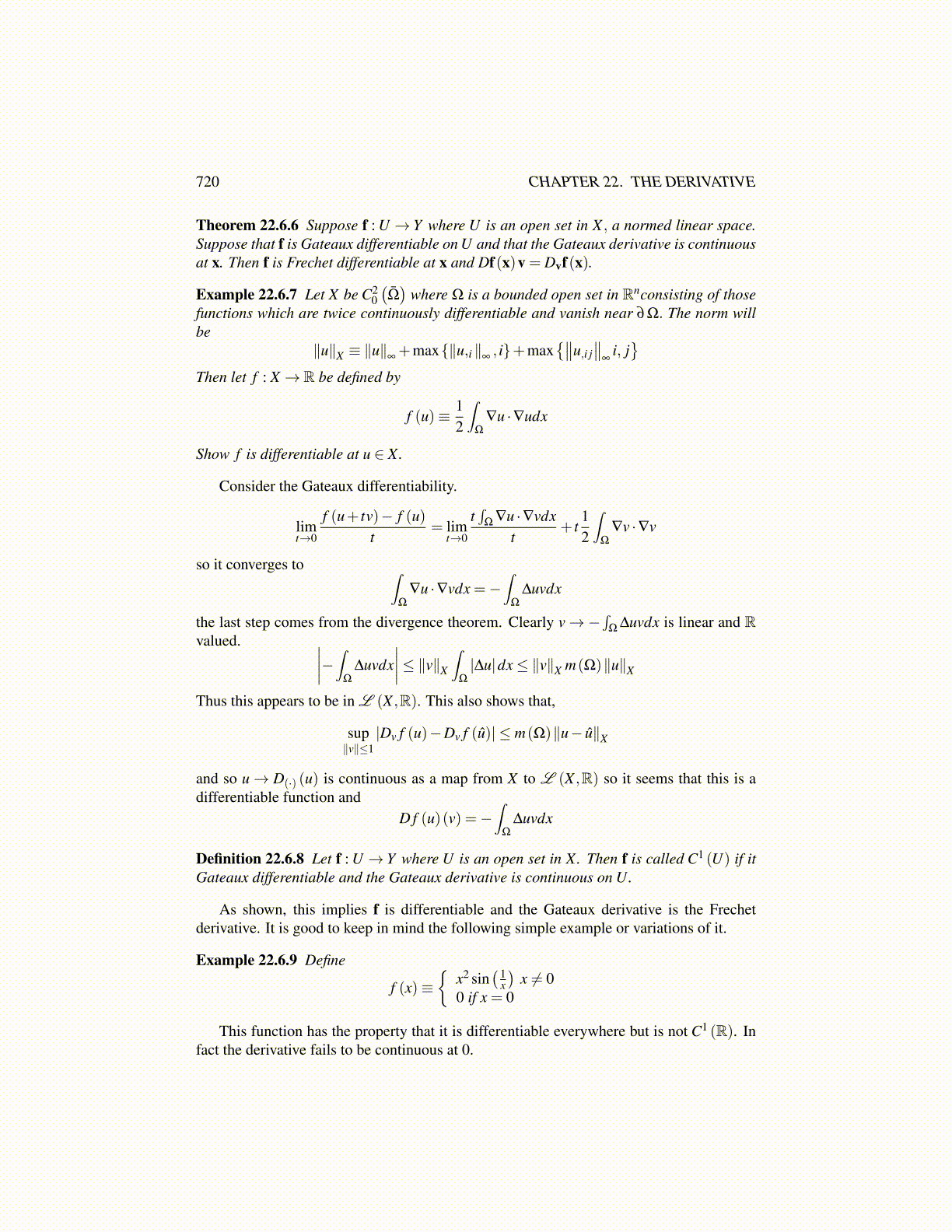
720 CHAPTER 22. THE DERIVATIVE
Theorem 22.6.6 Suppose f : U → Y where U is an open set in X , a normed linear space.Suppose that f is Gateaux differentiable on U and that the Gateaux derivative is continuousat x. Then f is Frechet differentiable at x and Df(x)v = Dvf(x).
Example 22.6.7 Let X be C20(Ω̄)
where Ω is a bounded open set in Rnconsisting of thosefunctions which are twice continuously differentiable and vanish near ∂Ω. The norm willbe
∥u∥X ≡ ∥u∥∞+max{∥u,i ∥∞
, i}+max{∥∥u,i j
∥∥∞
i, j}
Then let f : X → R be defined by
f (u)≡ 12
∫Ω
∇u ·∇udx
Show f is differentiable at u ∈ X.
Consider the Gateaux differentiability.
limt→0
f (u+ tv)− f (u)t
= limt→0
t∫
Ω∇u ·∇vdx
t+ t
12
∫Ω
∇v ·∇v
so it converges to ∫Ω
∇u ·∇vdx =−∫
Ω
∆uvdx
the last step comes from the divergence theorem. Clearly v→−∫
Ω∆uvdx is linear and R
valued. ∣∣∣∣−∫Ω
∆uvdx∣∣∣∣≤ ∥v∥X
∫Ω
|∆u|dx≤ ∥v∥X m(Ω)∥u∥X
Thus this appears to be in L (X ,R). This also shows that,
sup∥v∥≤1
|Dv f (u)−Dv f (û)| ≤ m(Ω)∥u− û∥X
and so u→ D(·) (u) is continuous as a map from X to L (X ,R) so it seems that this is adifferentiable function and
D f (u)(v) =−∫
Ω
∆uvdx
Definition 22.6.8 Let f : U → Y where U is an open set in X. Then f is called C1 (U) if itGateaux differentiable and the Gateaux derivative is continuous on U.
As shown, this implies f is differentiable and the Gateaux derivative is the Frechetderivative. It is good to keep in mind the following simple example or variations of it.
Example 22.6.9 Define
f (x)≡{
x2 sin( 1
x
)x ̸= 0
0 if x = 0
This function has the property that it is differentiable everywhere but is not C1 (R). Infact the derivative fails to be continuous at 0.